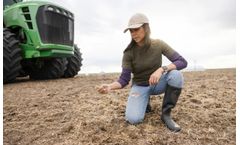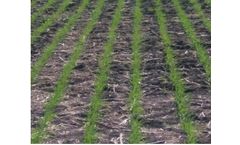Canola Crop Articles & Analysis
9 articles found
Emergency Water Stages in the Unforgiving Dry Climate of the Canadian Prairies Many businesses in the prairies rely heavily on rain and melting snow for their water supply. But right now, Alberta and Saskatchewan are facing record-low precipitation. The provinces of Alberta and Saskatchewan have struggled with droughts and water shortages for the last three years, and this year, the world is ...
Avoid excess crop nutrients in your fertilizer strategy to maintain soil health and protect your pocketbook The push to produce higher yields per acre every year continues to weigh heavily on western Canadian farmers. That pressure is accompanied by economic and environmental concerns. Should you invest more money into crop nutrients to reach record yields? Will that investment pay off? Will ...
Time management is a critical component of harvest preparation - when a grower has multiple fields to stage, knowing where to prioritize first is key. Mature canola crops are challenging to navigate through and a common workaround to gauge staging readiness includes perimeter scouting, or evaluating seed color change and degree of dry down along the edges of the ...
To know which options are right for you depends on your location, field history and crop rotation. Don’t forget that organic matter is not a one season solution. ...
Located in the medium brown soil zone, Barry and Spencer grow a rotation of canola, cereals, peas and canary seed. In 2021, they used TELUS Agriculture Weather Stations on their farm for the first time. They “had a really good experience overall”, Spencer says, using the weather stations to help make in-season application decisions and gain a better understanding of ...
But, because canola seed is expensive and canola companies were invested in optimal production, seeding rate practices changed. Today, 1000 kernel weight (TKW) testing is a given in canola, corn, sunflower, and beans, and variable rate seeding is intriguing more and more farmers. ...
But nothing stood out more than the glowing, yellow canola fields. When I hear “canola” I immediately think of the oil we cook with but come to find out there are many more reasons for growing this beautiful crop besides impressing us travelers. ...
Agronomic implications of saving seed from a canola crop were investigated by planting certified seed and saved-seed of an open-pollinated and a hybrid canola cultivar at eight site-years in Saskatchewan and Alberta, Canada. ...
Intercrops of canola (Brassica napus L.) and wheat (Triticum aestivum L.) were established at three sites in Alberta, Canada in 2005 and 2006 to determine interactions between intercropping regimes and crop grain and biomass yield, crop quality characteristics, soil microbial community biomass and diversity, flea beetles (Phyllotreta spp., ...







